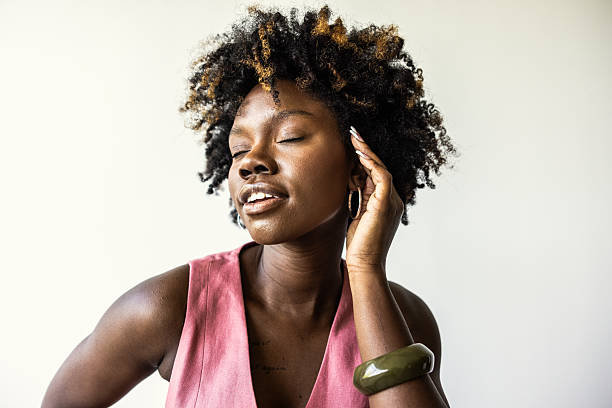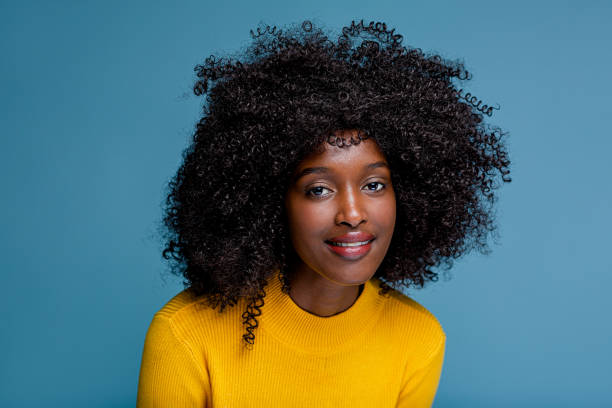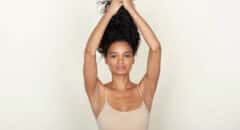
For anyone who came of age in the ’90s or early 2000s, the beauty ideal was crystal clear: pin-straight, flat-ironed hair was the gold standard. Frizz was the enemy. Curls were something to tame, flatten, or stretch into submission. But look around today, and the shift is undeniable—natural curls, coils, and waves are not only accepted, they’re celebrated. So what triggered this cultural pivot?
From Conformity to Authenticity
At the heart of the curl revival is a larger cultural movement: authenticity over conformity. Millennials and Gen Z are driving a broader conversation around self-acceptance, mental health, and rejecting outdated beauty standards.
What used to be labeled “unruly” or “unprofessional” is now seen through a different lens: real, honest, and powerful. Embracing natural texture isn’t just about hair—it’s about identity, visibility, and pride.
“For many of us who grew up in the ‘90s, sleek, pin-straight hair was the ideal, and anything outside of that was treated as ‘messy’ or ‘unruly.’ But now, people are questioning those old beauty norms,” Samantha Cross, Curly Hair Expert and CEO/Owner at Calgary-based Curl Warehouse, tells BlackDoctor.org.
RELATED: 4 Tips to Keep Your Curls Healthy on Vacation (Without a Protective Style)
The Power of Representation
Social media has played a massive role in this transformation. Platforms like TikTok, YouTube, and Instagram give space for voices and textures that traditional media ignored.
For the first time, people could see others with similar hair types share their routines, celebrate their texture, and speak candidly about their hair journeys.
“We’re finally seeing representation that celebrates curls, coils, and everything in between. That visibility has helped shift the narrative: curls are no longer something to ‘fix’—they’re something to be proud of,” Cross adds.
RELATED: How to Protect Your Curls from Sun and Chlorine Damage
The Rise of Curl-Specific Care
Another game-changer? The explosion of curl-specific products and education. For decades, the haircare aisle was a desert for curly-haired consumers—most products were designed to smooth, straighten, or “control.”
Now, there’s an entire ecosystem built around curl health, and it’s changed everything. Instead of trial and error with products that weren’t designed for them, curlies now have access to formulas that nourish, define, and support their texture.
“There’s more understanding around things like moisture retention, curl clumping, and ingredient awareness. It’s no longer about trial and error with straight-hair products; it’s about choosing products and routines tailored to your curl type and hair goals,” Cross notes.
RELATED: 9 Reasons To Detox Your Curls

The First Step: Change Your Mindset
If you’re just starting your curly hair journey after years of flat-ironing or chemical treatments, the biggest hurdle isn’t your product stash—it’s your mindset.
Many approach their natural hair with a damage-control attitude, looking for quick fixes or instant definition. But the real work starts when you stop trying to “manage” your curls and start trying to understand them.
“Instead of aiming for perfection, aim for progress. Understand that damaged curls won’t bounce back overnight—it’s a process of recovery, discovery, and patience. Celebrate the little wins along the way, like less frizz, more hydration, or your first defined curl clump. Shifting your mindset from frustration to curiosity will make the entire journey more empowering,” Cross shares.
Technique > Product
Another often-overlooked part of the curl equation is technique. You can buy all the right products, but if you’re applying them to nearly dry hair or brushing the wrong way, you’ll still get disappointing results.
One of the most common missteps? Applying stylers to dry or towel-dried hair.
“Applying product to dry hair can cause frizz and disrupt clumps. Instead, apply your leave-in, gel, or cream right after conditioning while your hair is still dripping or damp. Use techniques like ‘praying hands’ or ‘raking’ to distribute product evenly, and scrunch to encourage curl formation. It’s not just what you use—it’s how and when you use it,” Cross says.

Online Communities: The New Curl Collective
What’s made the curl revolution so successful is how communal it’s become. Online spaces offer more than tips—they offer support. For people who never saw their hair type in magazines or commercials, discovering others with similar textures online is transformative.
“Social media has been huge in the curl movement. Platforms like Instagram, TikTok, and YouTube have allowed people to see themselves represented—something many of us lacked growing up. We’re now able to learn directly from other curlies around the world, share product recommendations, and troubleshoot routines together,” Cross explains. “It creates a sense of community and validation. These online spaces remind people that their texture isn’t weird or wrong—it’s beautiful, and there’s a whole community out there cheering them on.”
What’s Next for Curls?
The curl care space is only getting better. There’s growing interest in scalp health, clean ingredients, and minimalist routines that focus on quality over quantity. Consumers are more informed, brands are more transparent, and the tools—from curl-friendly brushes to diffusers designed to reduce frizz—are finally catching up. This isn’t just a passing trend; it’s a long-overdue correction.
“I love that more companies are developing tools specifically for curls—like diffusers, brushes, and bonnets designed with curl integrity in mind. It’s a great time to be in the curl space—people are more empowered and informed than ever before,” Cross concludes.









